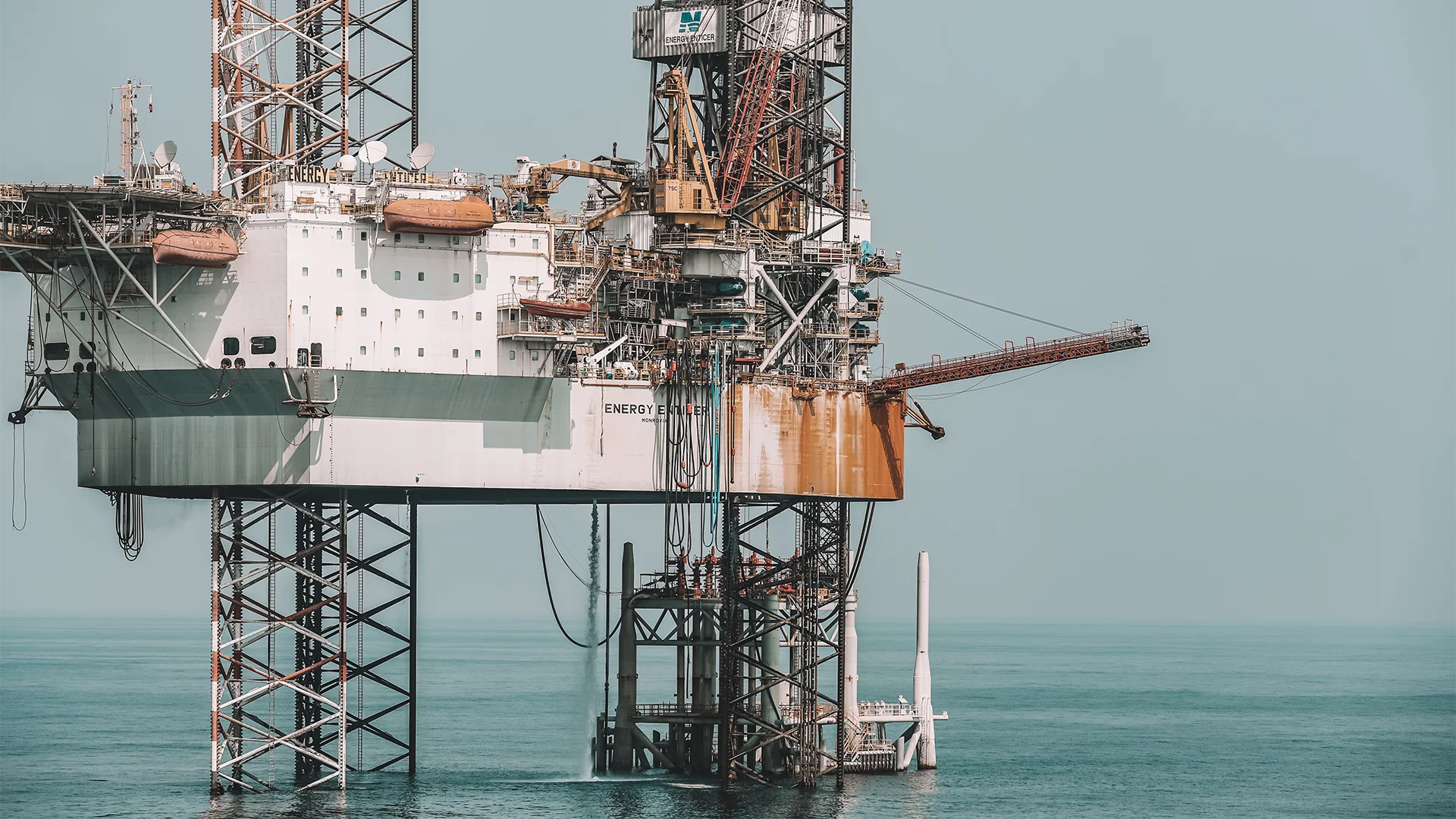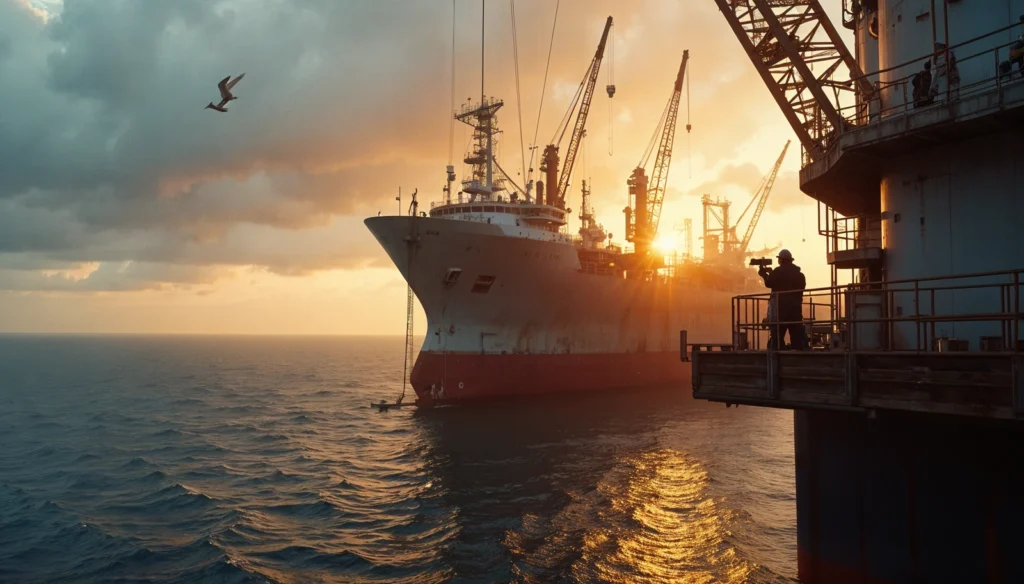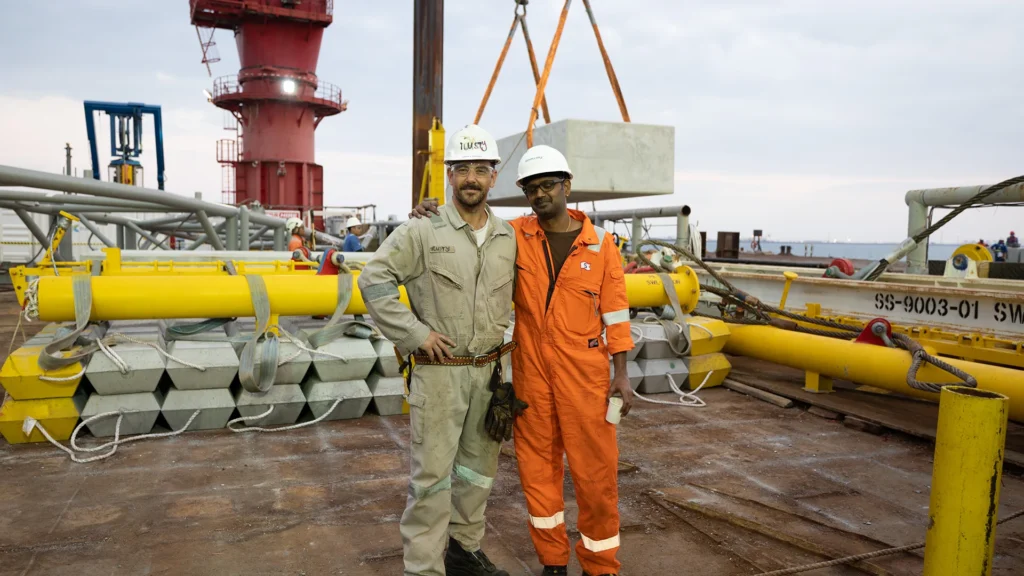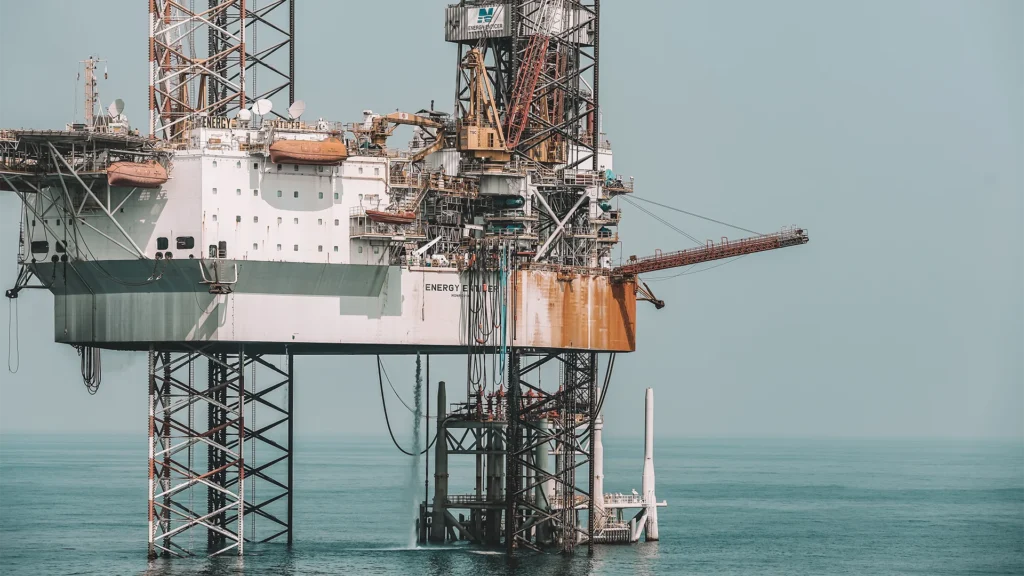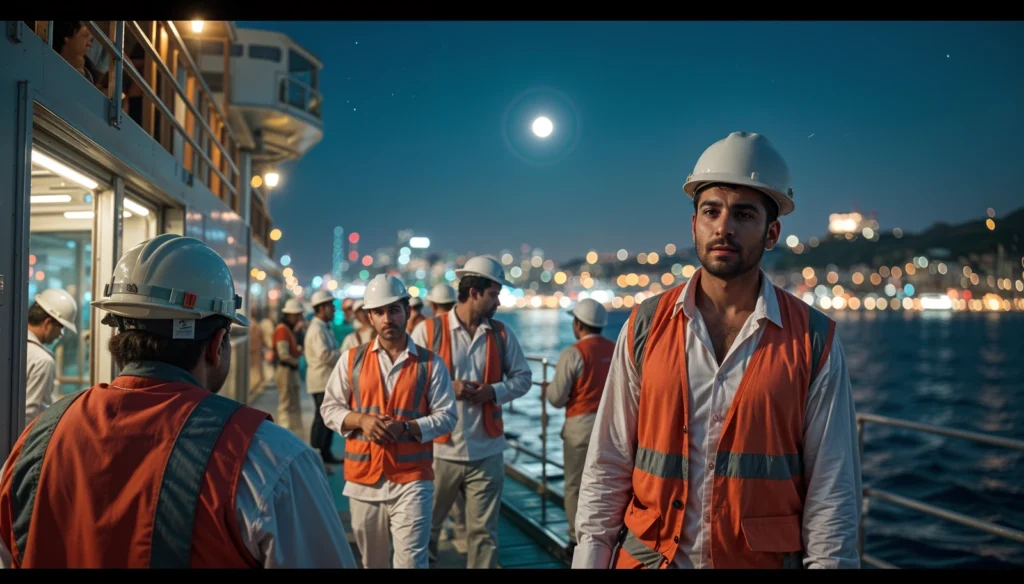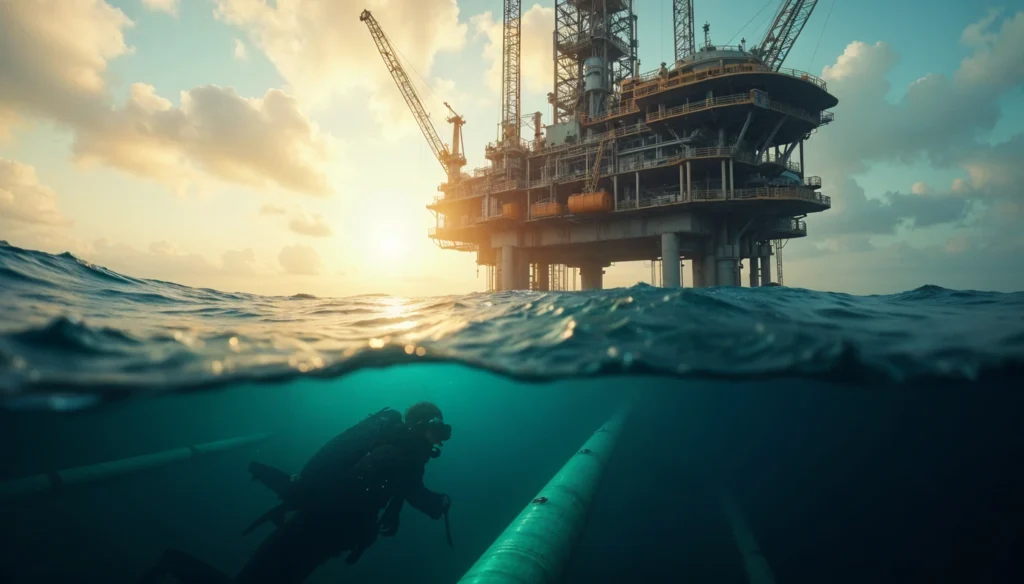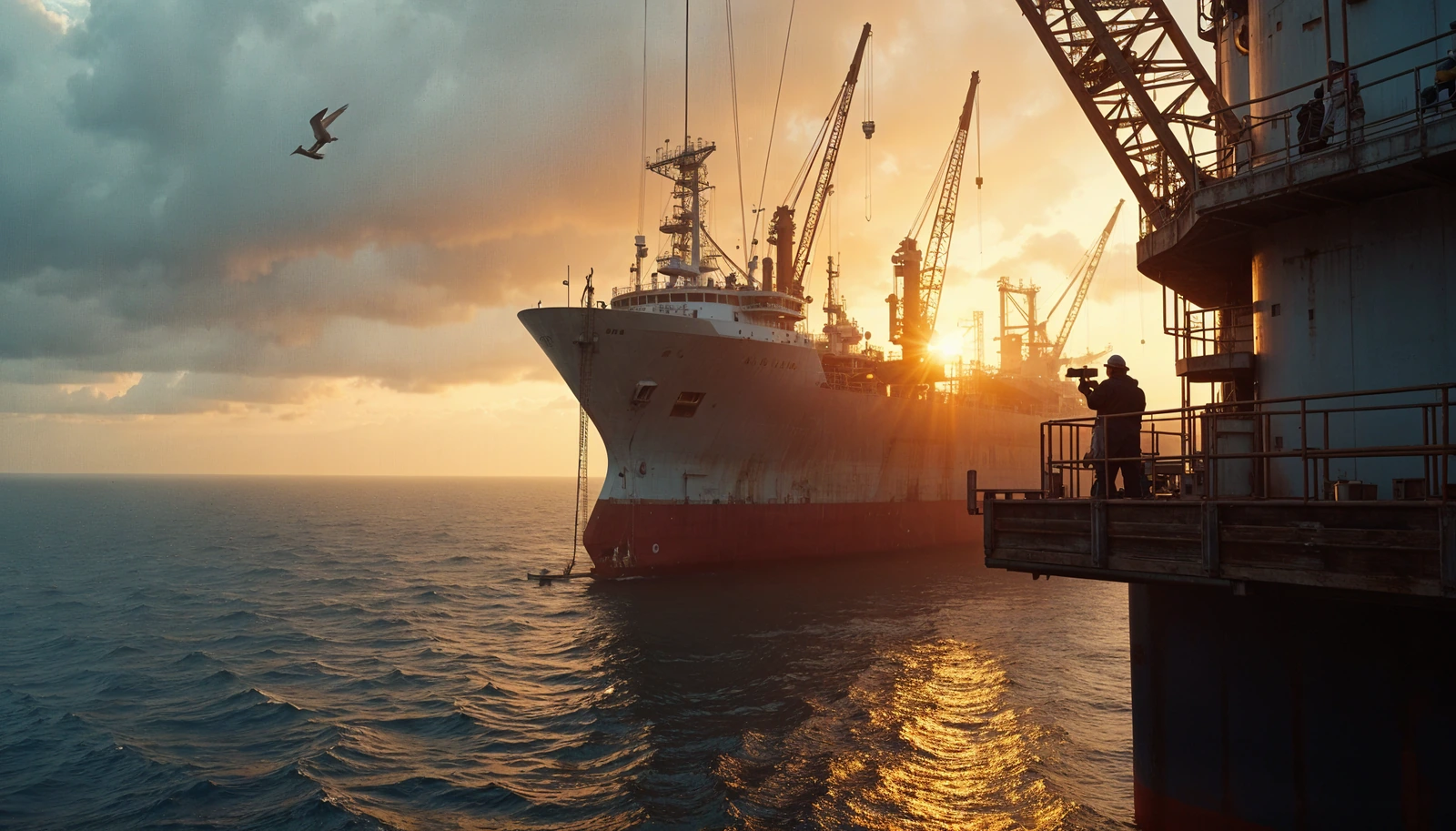Steel doesn’t just rise — it’s forged, lifted, welded, bolted, floated, and finally planted into the Earth or sea. At Aurora Media, we’ve spent years following the life cycle of offshore megastructures — from the first spark in a fabrication yard to the moment a crane releases 3,000 tons of structure into open water. Capturing that transformation is as complex as the construction itself.
This isn’t just industrial photography. It’s choreography in wind, salt, and steel.
A Story Measured in Years and Tonnage
Every megastructure we film has a journey — and it’s never short. Some projects last years. What begins as a skeleton in a steel yard in Poland or Turkey may end as a towering jacket platform in the North Sea or a floating substation in the Atlantic. Our job is to document that full arc.
We’re brought in early. Before the welding starts, before the safety barriers go up, often even before the final blueprints are approved. Clients want to show investors, regulators, or the public how their vision becomes reality — and they rely on us to give it shape, sequence, and cinematic gravity.
Our first task is to learn the plan like the engineers do. Where will the modules be moved? When will lifts occur? Which milestones can’t be missed? We don’t just chase moments — we schedule for them, rehearse for them, and position ourselves in wind corridors and heat zones to capture them properly.
Saltproof and Storm-Ready: Our Gear Arsenal
Shooting in heavy industrial zones — especially offshore — means your gear has to survive what humans barely can. We’ve built our own custom housings and transport rigs. Salt eats everything. Wind knocks over the unprepared. Vibrations from grinders and cranes shake unmounted cameras apart.
We use:
- Canon, Lumix, RED Komodo and Sony FX6 rigs for ground and shoulder work
- DJI Inspire and Mavic drones for fast aerials and top-down inspection shots
- GoPros and Insta360 cams mounted on hard hats, cranes, ROVs, and helmets
- Cine cranes and sliders for slow motion in extreme conditions
- ROV camera systems with 4K capacity for underwater module work
- Long-term time-lapse kits secured on scaffold towers for months
Filming across three continents, you learn quickly that the sun doesn’t wait, the crane won’t delay for a better shot, and nobody repeats a lift just because your focus was off. Every frame has to be earned in real time.
Crew with a Construction Mindset
Our team doesn’t show up in vests with “MEDIA” printed on the back. We arrive in full PPE, trained and certified for offshore conditions, ready to climb, crouch, or fly wherever needed. We work alongside welders, supervisors, and loadmasters — not separate from them.
In one recent shoot, a massive top-side unit had to be installed on a jacket within a five-minute weather window. One take. No reset. We coordinated three cameras, two drones, and a long-range lens from a nearby vessel — all while tracking radio chatter from the lift director. That moment, compressed into 14 seconds of footage, became the defining shot of a three-year build.
That’s what we do.
Making Steel Breathe on Screen
It’s not enough to show steel. It needs to feel alive. That’s where our editorial approach comes in. We combine the raw scale of engineering with the subtle moments that humanize the build — the hand signals before a lift, the chalk marks on a beam, the quiet moment of coffee at sunrise before the day begins.
Our post-production team layers these images into narratives — for technical documentation, marketing, recruitment, training, or cinematic storytelling. We give each project a visual identity that matches its purpose: bold, precise, enduring.
Steel Will Rise — But So Will the Story
A megastructure is more than a pile of parts. It’s vision made solid. Capturing that means showing not just what was built, but how and why it was done — and who made it happen.
At Aurora Media, we’re not just filmmakers. We’re storytellers embedded in industry, wired for danger, fluent in engineering, and always looking for the next great shot — even if it’s 30 meters above deck, or 100 meters below the waves. Be ready, all the time!
At 30 meters above the sea, you’re closer to the clouds than the shore. At 100 meters below, you see a darkness that only machines explore. Between these extremes lives a world of action, precision, and quiet resilience. That’s where Aurora Media thrives. And that’s where we keep telling stories — one frame at a time.

